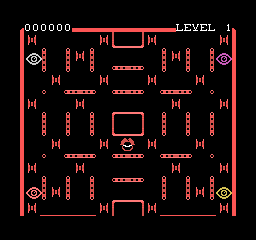 |
| The box stops here. (image from Wikipedia) |
It seems that after a successful ten years in business, and another ten less successful years in business, the rental service Redbox is no more. Originally conceived by a McDonald's executive, Redbox benefited from the low overhead of its automated kiosks and the eventual collapse of Blockbuster Video... only to itself be obsoleted by the instant gratification of streaming services like Netflix.
Reflective of its fall from grace and eventual demise, the Redbox brand was traded off to a series of increasingly unremarkable corporate parents, from fast food giant McDonald's to the more niche CoinBase to (and I am not kidding about this) Chicken Soup for the Soul, the publishers of those drippily sentimental books that fell out of fashion around the same time as Beanie Babies.
For what it's worth, I used Redbox a few times in my life, but quickly lost interest when it stopped renting video games five years ago. One could hardly blame them... the Redbox booths were a frequent target for scammers, who would keep the discs and feed a printed code into the kiosk to make it think the games had been returned safely.
Eventually, Redbox got wise to the heisting hijinx and sold their remaining stock of games for fire sale prices... I still have a few Playstation 4 games in those familiar clear plastic cases. Except now, they're going to look like relics of a bygone era, like my copy of Battle Arena Toshinden in the Blockbuster box.
By the way! I'm hard at work on another ColecoVision game, Eyebrawls. It's an adaptation of the little seen Rockola arcade game, Eyes. Here's a peek at what's in store in the next couple of months.
I'm not working as hard as Inufuto, though. When this Japanese programmer makes a video game, he ports it to every 20th century game console you know exists, as well as a few systems and home computers you never knew existed. One of his creations, Cracky, is available for at least two dozen machines, including such oddities as the PASOPIA7, the Panasonic JR-200, and the SuperVision, a low-rent Game Boy competitor that always prompted groans whenever it appeared in an episode of The Price is Right. (The crappy late night version hosted by Tom Kennedy, natch.) One AtariAge user described the system as the "video game handheld of the less fortunate," and few gamers were as profoundly unfortunate as SuperVision owners.
What's nifty about Inufuto's work is that it highlights the differences between the various game systems. Cracky is the same on every format... and yet it's not, due to the limitations imposed by each console. For instance, the VIC-20 version is less smooth and a bit more flickery than the others, while the Atari 800 version has brighter colors but a chunkier resolution than its ColecoVision counterpart. It's a fascinating science experiment... albeit an extremely nerdy one.


No comments:
Post a Comment